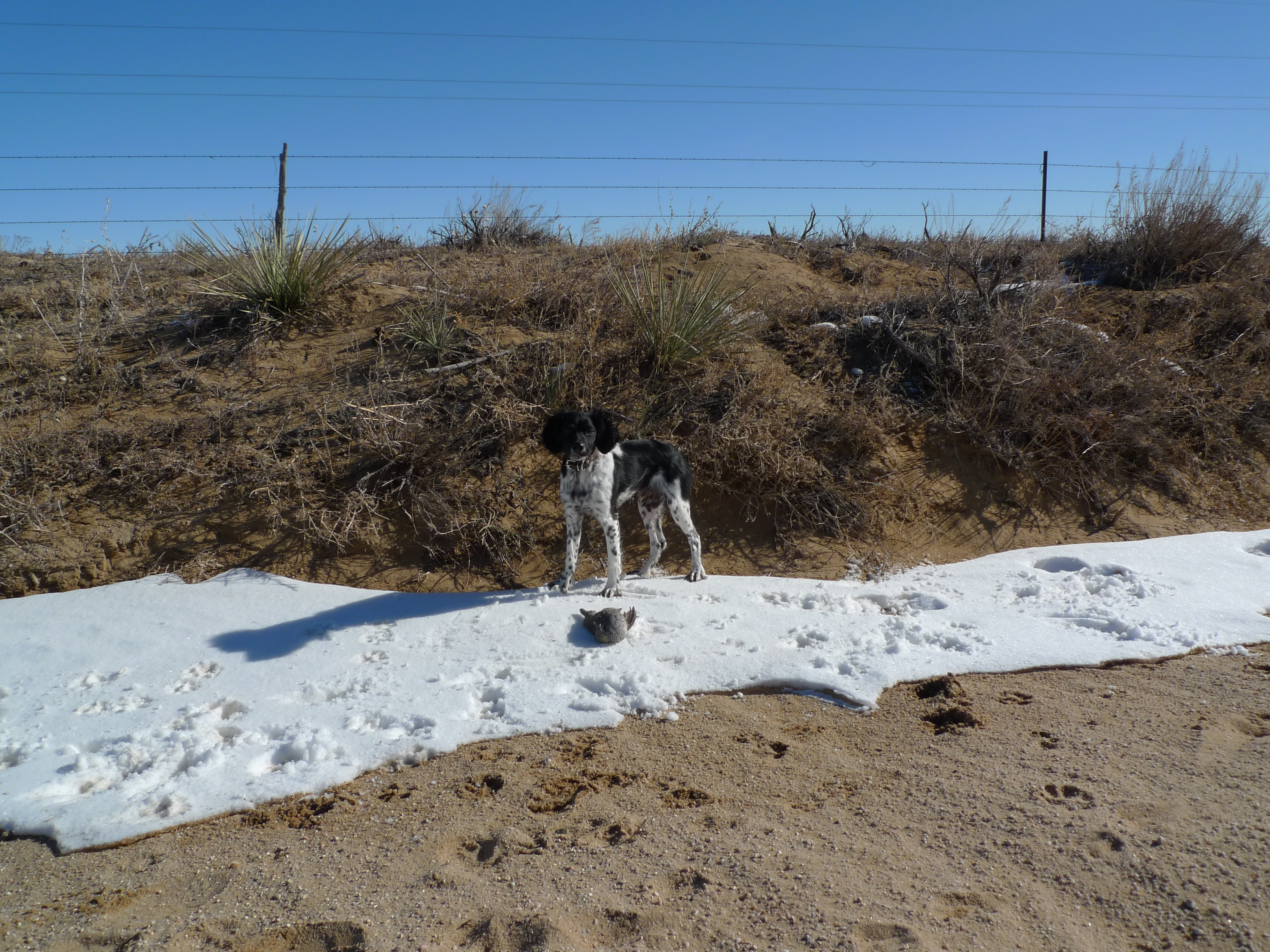Scaled Quail
While you have to approach bobwhite as a gentleman to gentleman, scaled quail are usually approached as the running, cheating bastards that they may be. It is generally reputed that scaled quail can be very frustrating birds to hunt. That is because cotton-tops or blue quail, as they are often called, have well-deserved and notorious reputation for running, rather than holding tight as gentleman Bob does. They are rumored to be devilish for pointing dogs.
A recent article on one of our favorite sites, Project Upland, said, “If you’re a bird hunter chasing these blue streaks across a vast geographic area which encompasses south-central Arizona, northern New Mexico, east-central Colorado, southwestern Kansas and south through western Oklahoma and western and central Texas, then you’d better be ready to move fast and be ready to shoot at a moment’s notice. Wingshooters need to be in decent shape and come prepared wearing a good pair of boots… First off, when scaled quail flush, they fly the length of two football fields! More or less. Sure they covey up, but once flushed, they scatter like the wind. If hunters and bird dogs are not able to get on them fast (and at times even if they do), scaled quail will quickly be out of shooting range, be it by running or flying.” The author goes on to recommend shooting #7s followed by #6s. And then writes, “I may offend hunters with my next statement, but there’s really no magic shot size. If one pellet works on a particular bird, the next size bigger and smaller will, too. Compared to bobwhite quail, scaled quail are the street thugs of the uplands. Clad in their armor-like getup, these birds are tough and will hit the ground running, resulting in lost or hard to find birds! So shot size is a little important. When a scaled quail is knocked down, the hunter should never take their eyes off of it and mark where the bird landed. The hunter and/or dog needs to get to the bird PDQ! Scaled quail live in a dry climate and scenting conditions could affect your canine partner in locating downed birds. Also, blues don’t die as easily as bobs. Scaled quail that are wanting to live will find the nearest rat hole in the ground or burrow under a cholla or yucca plant and disappear forever. You’ve been warned.”
Well, for us, we agree with some of that and disagree with other points at least in the four states where we hunt them over pointing dogs. If hunting without a dog, that may be the case—we haven’t tried. First, they do run, but usually not more than 50 yards. And they don’t run every time they are pressured. Often times, the dogs will get birdy and/or point a large group from a fairly long range. They will often flush wild out of shotgun range as you approach the first flush, but sometimes they will hold if they are not pressured or you happen to be around good cover and water sources such as guzzlers. The secret is to get to the spot where they flushed from fairly quickly while at the same time marking where the group went down. Then, using a technique taught to us by Elmer Smith, a legendary postman who hunted into his 80’s, make a small spiral around the spot they flushed from and start working bigger spirals until you hit about 100 yards, often there are other birds that are still running that got separated from the main group. Usually the dogs will have good pointing opportunities on these birds. Repeat the same technique in the spot you marked where they landed. Often you will have a dozen or more points on the singles or groups of 2-3, where they landed. They behave fairly similarly to Bobwhites after the initial flush.
And, we do agree with marking shot birds down well. Dogs often have trouble retrieving them (as they have lost a lot of their scent after two flushes, and the dry conditions make it more difficult, and they blend into the landscape very well, and they often run a short distance or even go down a hole or under a cholla thicket before dying.
And we have found open chokes with #8s to be the best solution to shooting well on blue quail, but #7 1/2’s work. We think that #6 is overkill on these small birds over pointing dogs.
Finally, dog boots, lots of water, a leatherman or foreceps for removing cactus needles, and a crate fan are a must in this cactus filled dry country for your four-legged friends.
They make some interesting calls, which you can often hear while hunting. I’ve had friends who were successful in trying to call them in.
Bobwhite Quail
For other game bird adventures see this page…
Interesting article on communal breeding bobwhite quail…

